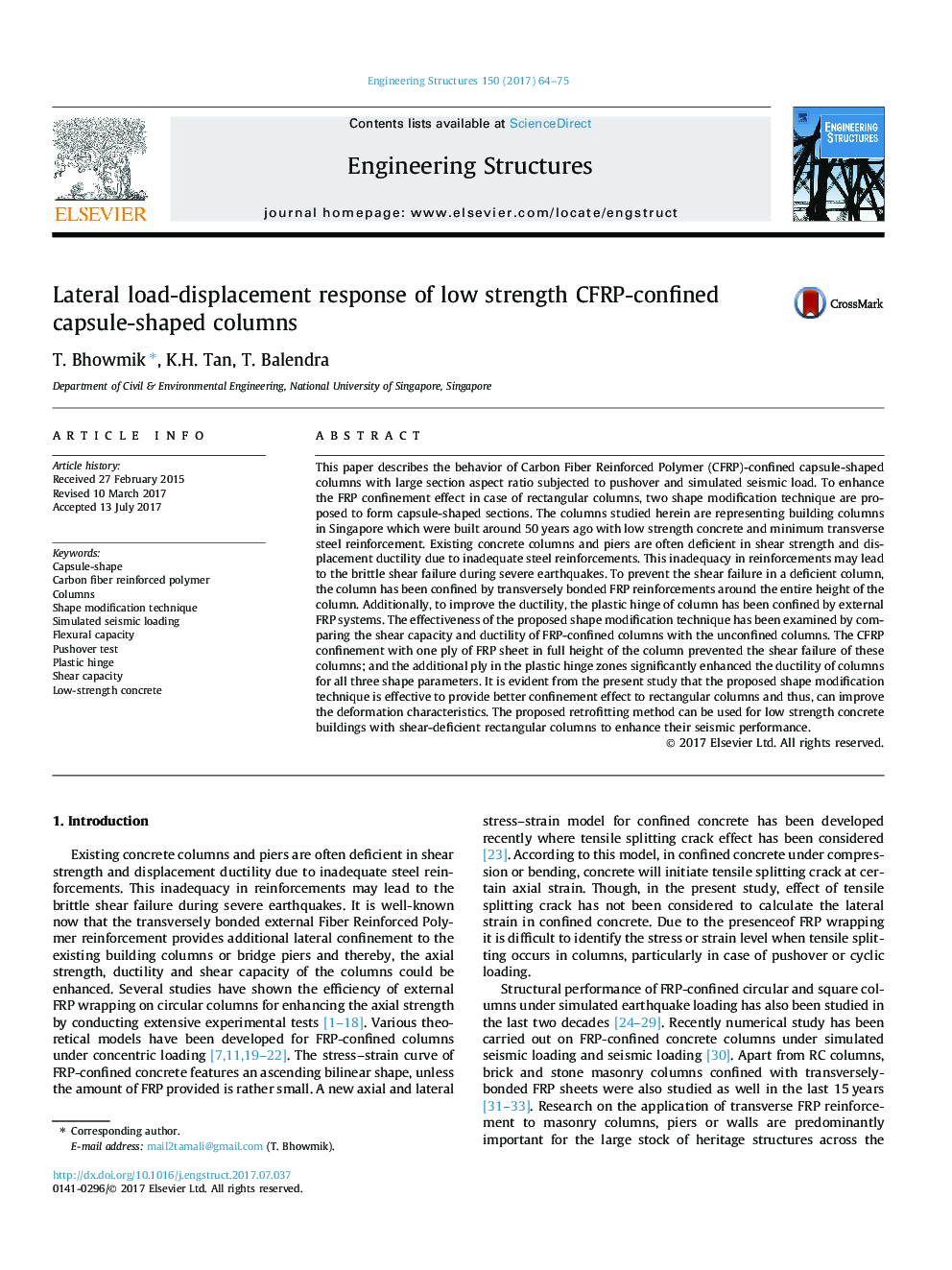| Article ID | Journal | Published Year | Pages | File Type |
|---|---|---|---|---|
| 4919817 | Engineering Structures | 2017 | 12 Pages |
Abstract
This paper describes the behavior of Carbon Fiber Reinforced Polymer (CFRP)-confined capsule-shaped columns with large section aspect ratio subjected to pushover and simulated seismic load. To enhance the FRP confinement effect in case of rectangular columns, two shape modification technique are proposed to form capsule-shaped sections. The columns studied herein are representing building columns in Singapore which were built around 50Â years ago with low strength concrete and minimum transverse steel reinforcement. Existing concrete columns and piers are often deficient in shear strength and displacement ductility due to inadequate steel reinforcements. This inadequacy in reinforcements may lead to the brittle shear failure during severe earthquakes. To prevent the shear failure in a deficient column, the column has been confined by transversely bonded FRP reinforcements around the entire height of the column. Additionally, to improve the ductility, the plastic hinge of column has been confined by external FRP systems. The effectiveness of the proposed shape modification technique has been examined by comparing the shear capacity and ductility of FRP-confined columns with the unconfined columns. The CFRP confinement with one ply of FRP sheet in full height of the column prevented the shear failure of these columns; and the additional ply in the plastic hinge zones significantly enhanced the ductility of columns for all three shape parameters. It is evident from the present study that the proposed shape modification technique is effective to provide better confinement effect to rectangular columns and thus, can improve the deformation characteristics. The proposed retrofitting method can be used for low strength concrete buildings with shear-deficient rectangular columns to enhance their seismic performance.
Related Topics
Physical Sciences and Engineering
Earth and Planetary Sciences
Geotechnical Engineering and Engineering Geology
Authors
T. Bhowmik, K.H. Tan, T. Balendra,
